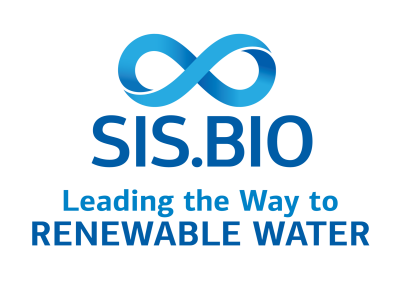ONE BIOTECHNOLOGY
WATER IS NOT JUST A CONSUMABLE RESOURCE
For centuries, we have treated water as an inert commodity, something to be moved, filtered, treated, and controlled by engineered infrastructure. We build bigger treatment plants, longer pipelines, and stronger filtration systems, yet source water quality continues to decline.
The reason is simple: water is not an inert substance – it is inherently biological.
Nature designed water to regenerate itself through a complex web of oxygen dynamics, nutrient cycling, and biological interactions that maintain water quality. But instead of working with this system, we have disrupted and degraded it. We strip water of its biological function, overload it with excess nutrients, and discharge it back into Nature expecting it to recover on its own.
This imbalance – manmade infrastructure overwhelming natural water infrastructure – is the root cause of the global water crisis. More infrastructure cannot fix this. We must change our approach.
THE TWO WORLDS OF WATER
Water moves through two distinct environments:
- Water in the Pipes – Treated, sterile water that flows through manmade infrastructure.
- Biological Water – The dynamic, living water found in rivers, lakes, reservoirs, and wastewater systems.

For more than 99% of its cycle, water exists as Biological Water, interacting with ecosystems and undergoing natural renewal processes. Yet, modern water management focuses almost entirely on the small fraction of time water spends in pipes.
This is the fundamental mistake – trying to control water while it is in pipes but neglecting it in its natural state. If we want to change the future of water, we must restore and enhance its restorative biological processes.
MAN v NATURE
THE PARADOX OF INFRASTRUCTURE
Wastewater treatment was humanity’s first attempt to use biology for water management.
Treatment plants are engineered to facilitate microbial processes, where bacteria break down contaminants and absorb nutrients, forming microbial sludge. The concept is simple: remove the sludge, and the water is clean enough to discharge.
But this approach has limits:
- It relies only on microbes, ignoring the full biological complexity of natural water infrastructure.
- You still have to separate and manage the microbial sludge, and increasingly costly and onerous task.
- Residual nutrients remain, fueling eutrophication in downstream rivers, lakes, and reservoirs.
- Over time, our discharges degrade the very ecosystems that were supposed to absorb them.
This is the paradox of infrastructure – the more we build, the more we degrade the natural water infrastructure that used to renew our water so we could use it again.
Nature designed water infrastructure that works. We must stop overwhelming it and start supporting it.
Natural Water Infrastructure
The Asset We Are Destroying
ONE BIOTECHNOLOGY
Nature’s Water Renewal Engine
Water follows Systems Theory, not Newtonian mechanics. Every aquatic environment is a complex adaptive system, governed by feedback loops, tipping points, and biological interactions – not just pipes and pumps.
ONE Biotechnology is the only solution that works within this reality.
SIS.BIO’s ONE Biotechnology is designed to:
- Restore oxygen balance – RADOR systems oxygenate the entire water column, including the benthic margin, breaking the internal nutrient recycling cycle.
- Eliminate sediment-driven eutrophication – Enzyme technology accelerates organic sediment digestion, preventing hypoxia and nutrient overload.
- Rebuild the food web – Micronutrient supplementation restores competition to cyanobacteria, reactivating the ecosystem’s natural nutrient clearance.
This is not a theoretical solution. It works.
Every time we deploy ONE Biotechnology, we deliver the same results:
- Reversal of eutrophication
- Elimination of hypoxia
- Prevention of HABs
This is the inevitable next step in water management, not an alternative. It is the only viable path forward.
BACK TO THE FUTURE – RENEWABLE WATER
The successfully navigate the journey back to the past when Nature sustainably supplied Renewable Water we the right vehicle. That vehicle is ONE Biotechnology – the solution to overcoming the three ways in which natural water infrastructure becomes degraded.
By restoring oxygen, we reactivate the natural processes that regulate nutrient dynamics and sustain a balanced aquatic ecosystem.
THE ROAD TO RENEWABLE WATER
ONE Biotechnology is more than technology – it is a comprehensive solution platform and a framework for systemic restoration of natural water infrastructure.
This is how we reclaim water security:
Aligning natural and manmade infrastructure into a single, continuous system.
Managing water as a biological system, not just a commodity in pipes.
Leveraging biotechnology to restore nature’s ability to renew water quality.
The transition to Renewable Water is not a question of if – it is a question of how quickly we can make it happen.
SIS.BIO is leading this transformation.
LEADING THE WAY
SIS.BIO is not just offering a better approach – we are leading the inevitable transformation of water resource management.
![]() SIS stands for Sustainable Infrastructure Solutions – we balance and align manmade and natural water infrastructure.
SIS stands for Sustainable Infrastructure Solutions – we balance and align manmade and natural water infrastructure.
![]() BIO represents the biotechnology revolution that will define the future of water resource management.
BIO represents the biotechnology revolution that will define the future of water resource management.
With ONE Biotechnology, we transform degraded water bodies from liabilities into assets, ensuring that water can be:
- Processed faster and renewed through natural infrastructure
- Restored to high-quality standards before being drawn back into infrastructure
- Reused more frequently, affordably, and sustainably
This is not just an improvement. It fundamentally transforms a problem that has confounded us for over half a century. After decades of failed interventions, we now have a clear Roadmap to Renewable Water. The question is no longer if we can restore the Renewable Water paradigm – it’s when, and whether we do it fast enough to avert a crisis – and that depends on how fast we act.

Join us. The future of water is biological.

